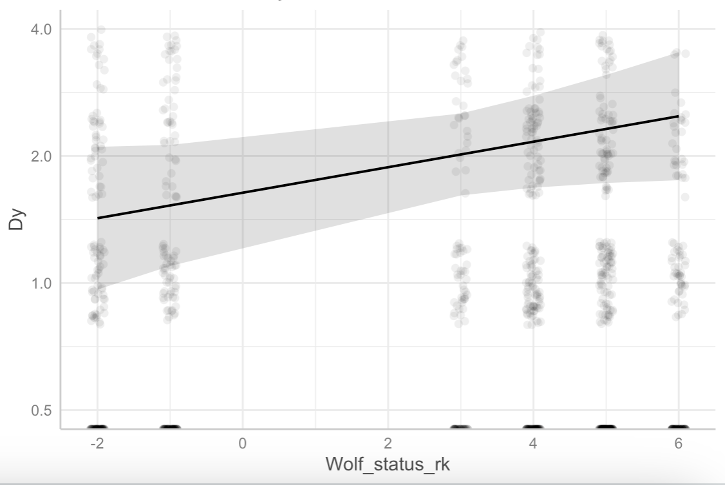Determination of potential overlap between the activity patterns of red deer, roe deer and chamois and the activity pattern of humans
I first compared the diel activity pattern of each ungulate species with the diel activity pattern of humans, for each scenario and two different periods of the year (Summer and Fall).



Several results came up from it:
- First I found an expected bimodal activity pattern with two peaks around sunrise and sunset for red deer and roe deer. The distribution was a bit flatter for the chamois but the two peaks could still be seen at dawn and dusk.
- Furthermore, even though I found a general tendency to avoid temporal overlap with humans for the three species, the red deer seems to be the one that avoids humans the most.
- The overlap percentage with humans was the highest in areas corresponding to the second scenario, including the wolves presence but without hunting.
- In opposite, the overlap percentage with humans was the lowest in areas including both hunting and predator pressures (scenario 3).
- Finally, the chamois tends to be less impacted by the different scenarios than the red deer and roe deer.
Analysis of the diel activity pattern of roe deer, red deer and chamois

This graph highlights the nocturnal activity (Nt) of the roe deer in function of the number of years since the recolonization of wolves in in given area (Wolf_status_rk).
The nocturnal activity decrease in areas where the wolves have been established for a longer time but only in areas without hunting pressures.
When both predator and hunting pressures are present, the roe deer are more nocturnal even in areas where the wolves are established.
This graph shows an increasing diurnal activity (Dy) of the red deer in areas that wolves recolonized first (Wolf_status_rk).

Unfortunately, I did not find any significant results for the chamois.